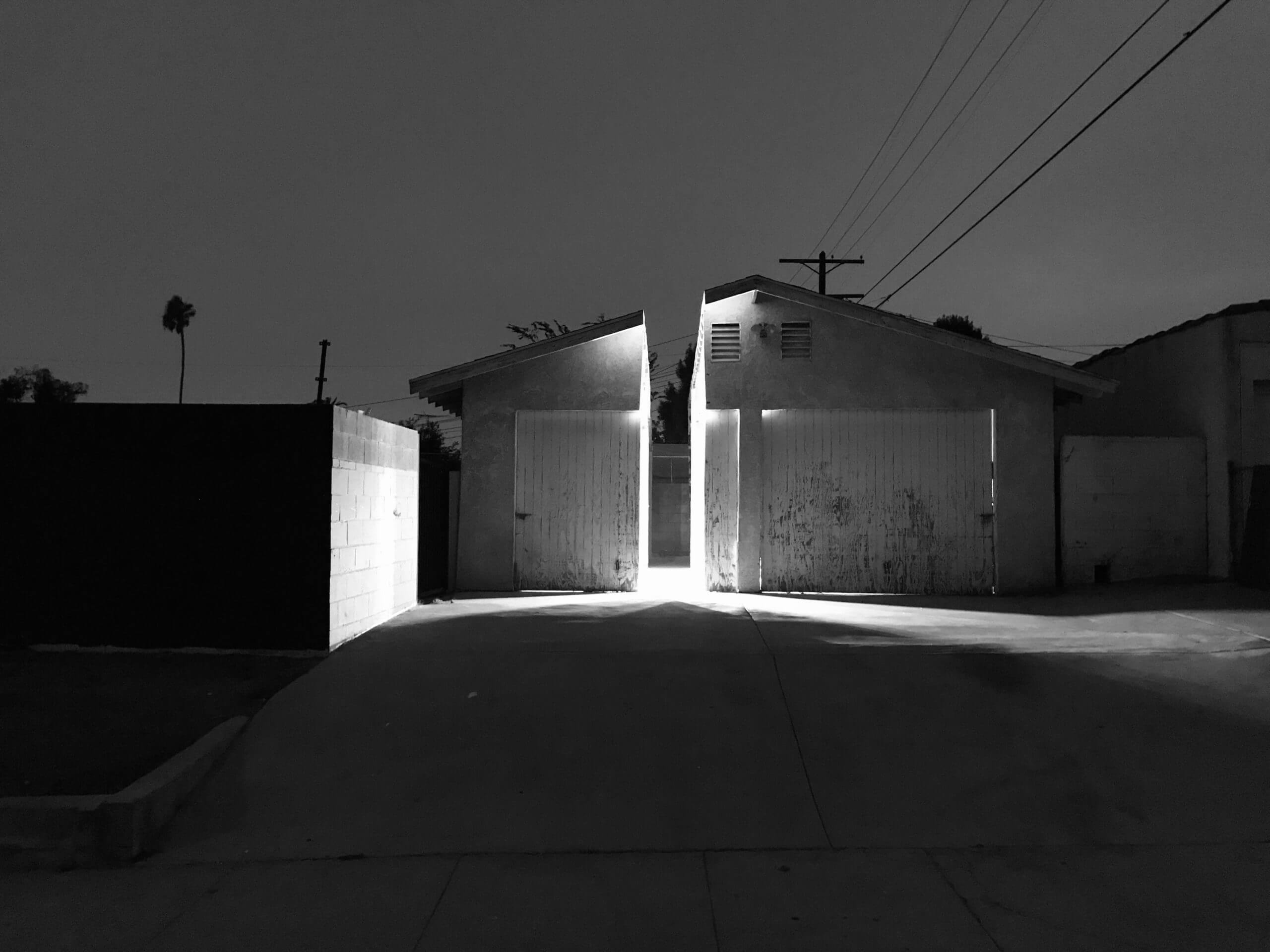Behind the Dungeon Family, Atlanta’s legendary hip-hop collective, was the Dungeon. It was an apt name for the crawl space of a small Lakewood Heights home where Organized Noize, the Family’s original members, produced its first music. This ominous-sounding venue quickly became a key node in the city’s rap scene, drawing Outkast, Goodie Mob, Parental Advisory, and other initiates of the Dirty South movement to its perch. Visitors to the virtual-only The Future Happened: Designing the Future of Music exhibition hosted by the Museum of Design Atlanta (MODA) can explore the interiors of 1907 Lakewood Terrace, moving from room to room to uncover traces of the community that once resided here.
Floorplans, candid photographs, and interactive icons yielding audio snippets give a sense of a lived-in place, where daily routines commingled with astonishing musical feats. The chirp of kids playing outside and the hum of passing cars trickle into the study and living room, just as loud music emanates from the floorboards. Downstairs, in the basement, the sounds of someone grinding weed and rolling a joint rise atop audio reverb and musical false starts.
Featuring the work of 40 artists across multiple disciplines, The Future Happened pays homage to the vast influence Atlanta’s musical culture has had on global trends in design, visual arts, and technology. The exhibition offers an engaging sensorial realm where the past, present, and future coalesce, while highlighting ideas, practices, and possibilities with which art and music can be better cultivated and experienced.

The show’s curatorial team, led by the Grammy Award–winning creative director and author Lawrence Azerrad, reflects these aims. Joining Azerrad are Ruby Savage, a creative director, DJ, and music and culture curator; Floyd Hall, a media strategist, cultural producer, and documentarian from Atlanta; and Marlin Fuentes, a designer, researcher, ethnomusicologist, and entrepreneur working at the nexus of culture, emerging technology, and design.
They have sorted a wide range of musical genres, from Afro-fusion to punk, and mediums, from art installations to augmented reality, into five thematic categories. Rubrics of healing and empowerment, community and technology, converge to form a visually striking collage of sights and sounds. There’s no order or specific route to traverse, as visitors are given the freedom to ping pong across time and modes of craft. One click leads to a spotlight on Volta, an artist-driven VR platform that empowers musicians to create custom performance experiences by converting their music into an interactive world. Another click pulls up the arresting cover art of Peter Saville, best known for his design of Joy Division’s 1979 Unknown Pleasures, and Lemi Ghariokwu, whose dense sociopolitical imaginaries have graced the albums of legendary Nigerian artist and revolutionary Fela Kuti. A simple refresh of the exhibition’s home page rejiggers the orientation of the artists, resulting in an entirely different, novel experience.
This disregard for any type of linear progression jibes with the ethos of The Future Happened, which, perhaps above all else, seeks to make connections where many might not see them. As Azerrad said in a recent interview, “There’s always been groundbreakers in music in our history and now and in our future and we need to pay attention to those innovations to be able to have deeper and more meaningful connections to music, culture, and each other.”
And while the exhibition celebrates technological advancement and its relation to music and art, it also provides a space for critique. In particular, important questions are posed regarding the advent of streaming and digital media that have had a massive impact on the way content is created, consumed, and shared. Though music has never been easier to access, preexisting issues relating to inclusion, diversity, and equity in the music industry persist. The New York–based artist Sajjad Musa, for one, challenges this reality through his work with Grammy award–winning singer and songwriter Burna Boy, who criticized the Coachella Music Festival for minimizing his name in its lineup bill. In creating the artwork for Burna Boy’s 2019 album African Giant, Musa printed the singer’s likeness on banknotes, an act of aggrandizement that re-centered a Black performer in a predominantly white space. Like so many pieces in this exhibition, Musa’s cover highlights the power design has in visualizing important messages in music.
But just as important as critique is care, a theme picked up by the Caribbean-Belgian artist Charlotte Adigry, whose music and visual panache feature in the exhibition. Where the sugary track “High Lights” sounds a playful tone about self-care and identity affirmation, the short film “Yin Yang Self-Meditation” invites visitors into a pensive, psychedelic realm where they might record their anxieties and breathing exercises. Adigry’s design sense swings pendulously between the two, moving from Black ballroom culture to gauzy ’80s club vibes.
The Future Happened: Designing the Future of Music offers an incredibly engaging virtual experience as few others have managed during this time of pandemic. The diverse array of innovative artists expands the idea of what design looks like in music, thus broadening the methods by which it can heal, empower, build community, and foster change. As the show demonstrates, the future doesn’t simply “happen”; rather, it is the result of individual actors coming together, consciously or not, in collectivities. The future is made, and remade, over and over.
This article originally appeared on our interiors and design website, aninteriormag.com.











